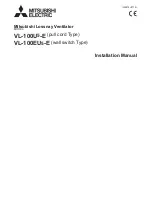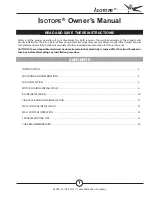
It is recommended that you test fan before finalizing
installation. Locate remote control transmitter. Test
fan speeds with the different fan speed buttons on
remote control . Test the light ON/OFF
function with the button on the remote control.
Test dimmer function by holding the button. If
the remote control operates all of the functions of
the fan, battery has been installed correctly. If the
remote control does not operate all of the fan
functions, refer to "Troubleshooting" section to solve
any issues before contacting Customer Service.
Fan
must
be on LOW
before
setting the fan in
reverse. Use button to recirculate air depending
on the season. A ceiling fan will allow you to raise
your thermostat setting in summer and lower your
thermostat setting in winter without feeling a
difference in your comfort.
NOTE
: If the remote control interferes with other
appliances, change code switches on the remote
control to another code. If you do change the code,
turn power off first
. After setting the new code on
the remote control, go back to the instructions for
SET button in Section 10 (page 9).
IMPORTANT
: Remote control must be synchronized
with fan in order to properly function.
page 10
11. Testing Your Fan.
remote control
I
II
IV
VI
III
V
-
- VI
I
Modifications not approved by the party responsible for compliance
could void the user's authority to operate the equipment.
*NOTE: This equipment has been tested and found to comply with the limits for a Class B
digital device, pursuant to Part 15 of the FCC Rules. These limits are designed to provide
reasonable protection against harmful interference in a residential installation. This
equipment generates, uses and can radiate radio frequency energy and, if not installed and
used in accordance with the instructions, may cause harmful interference to radio
communications. However, there is no guarantee that interference will not occur in a
particular installation. If this equipment does cause harmful interference to radio or television
reception, which can be determined by turning the equipment off and on, the user is
encouraged to try to correct the interference by one or more of the following measures:
* Reorient or relocate the receiving antenna.
* Increase the separation between the equipment and receiver.
* Connect the equipment into an outlet on a circuit different from that to which the
receiver is connected.
Consult the dealer or an experienced radio/TV technician for help.










































